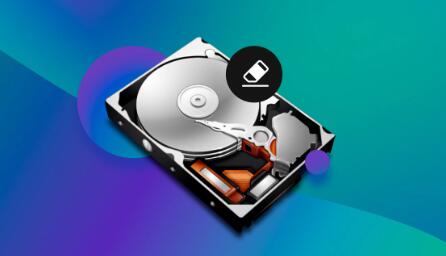Recovering data from a formatted external hard drive can seem daunting, but with the right tools and techniques, you can restore your files. One of the most effective methods is using the Command Prompt (CMD) in Windows.
Formatting and Data Recovery
When you format a drive, the file system is reset, and the data is marked as available for new data to be written. However, the original data remains on the disk until it is overwritten. Therefore, it is often possible to recover files from a formatted drive, especially if you act quickly and avoid writing new data to it.
Types of Formatting
Quick Format: This process removes the file system structure and marks the space as empty. Data can usually be recovered.
Full Format: This process not only removes the file system but also scans for bad sectors. This may overwrite existing data, making recovery more difficult.

Important Considerations
Stop Using the Drive: Immediately stop using the external hard drive to prevent overwriting data.
Backup Your Data: If you successfully recover your data, make sure to back it up to avoid future losses.
Prerequisites
Windows Operating System: This guide assumes you are using a version of Windows.
External Hard Drive: Ensure the drive is connected to your computer.
Basic Command Prompt Knowledge: Familiarity with basic CMD commands will be helpful.
Steps to Recover Formatted External Hard Drive Using CMD
Step 1: Access Command Prompt
Press Windows + R to open the Run dialog.
Type cmd and press Enter.
You may need to run CMD as an administrator. To do this, right-click on the Command Prompt icon and select Run as administrator.
Step 2: Identify Your External Hard Drive
To begin recovery, you need to identify the drive letter of your external hard drive.
In CMD, type the following command and press Enter:
diskpart
Next, type:
list volume
This will display all the volumes on your computer. Identify your external hard drive by looking at the size and label.
Note the drive letter (e.g., E:).
Step 3: Use the CHKDSK Command
The CHKDSK command checks the file system for errors and can sometimes recover files from a formatted drive.
In CMD, type the following command, replacing E: with the appropriate drive letter:
bash
chkdsk E: /f /r /x
/f: Fixes errors on the disk.
/r: Locates bad sectors and recovers readable information.
/x: Forces the drive to dismount before the process starts.
Press Enter and wait for the process to complete. This may take some time, depending on the size of the drive.
Step 4: Using the ATTRIB Command to Recover Files
If the CHKDSK command does not recover your files, you can try using the ATTRIB command to reveal hidden files.
Still in CMD, type:
javascript
attrib -h -r -s E:\*.* /S /D
-h: Removes the hidden attribute.
-r: Removes the read-only attribute.
-s: Removes the system attribute.
/S: Applies the command to all files in the current directory and subdirectories.
/D: Applies the command to directories.
Press Enter. This command will attempt to show all files, including those that may be hidden.
Step 5: Use the Xcopy Command for Data Backup
If you can see files after using the ATTRIB command, it’s wise to back them up.
Use the following command to copy files to a different location, replacing C:\Backup with your desired backup path:
mathematica
xcopy E:\*.* C:\Backup\ /S /E /H
/S: Copies directories and subdirectories except empty ones.
/E: Copies all subdirectories, including empty ones.
/H: Copies hidden and system files.
Press Enter to execute the command.
Step 6: Data Recovery Tools
Panda Assistant is a powerful and user-friendly data recovery software designed to help individuals and businesses recover lost or deleted files from various storage devices, including external hard drives, USB drives, and SD cards. With its intuitive interface, Panda Assistant caters to users of all skill levels, making data recovery accessible and straightforward.
One of the standout features of Panda Assistant is its advanced scanning technology, which can effectively locate and restore files lost due to accidental deletion, formatting, or corruption. It supports a wide range of file types, ensuring that users can recover photos, videos, documents, and more.
Panda Assistant emphasizes data security and user privacy. The software offers a secure recovery environment and includes a preview feature that allows users to view files before restoring them, ensuring they retrieve exactly what they need. Regular updates keep the software aligned with the latest advancements in data recovery technology, maximizing its effectiveness.
In addition to its powerful recovery capabilities, Panda Assistant provides comprehensive customer support and detailed documentation, helping users navigate the recovery process with ease. Whether you’re facing a minor file loss or a more complex data recovery challenge, Panda Assistant is your reliable partner in restoring valuable data. Experience peace of mind knowing that your important files can be recovered quickly and efficiently with Panda Assistant.
Step 7: Prevent Future Data Loss
Regular Backups: Ensure you back up important data regularly.
Avoid Quick Formats: Be cautious when formatting drives; choose the appropriate format option.
Use Cloud Storage: Consider using cloud storage services for important files.
About us and this blog
Panda Assistant is built on the latest data recovery algorithms, ensuring that no file is too damaged, too lost, or too corrupted to be recovered.
Request a free quote
We believe that data recovery shouldn’t be a daunting task. That’s why we’ve designed Panda Assistant to be as easy to use as it is powerful. With a few clicks, you can initiate a scan, preview recoverable files, and restore your data all within a matter of minutes.
Subscribe to our newsletter!
More from our blog
See all postsRecent Posts
- Data recovery salt lake city utah 2025-04-18
- Data recovery sacramento 2025-04-18
- Data recovery miami 2025-04-18

 Try lt Free
Try lt Free Recovery success rate of up to
Recovery success rate of up to









